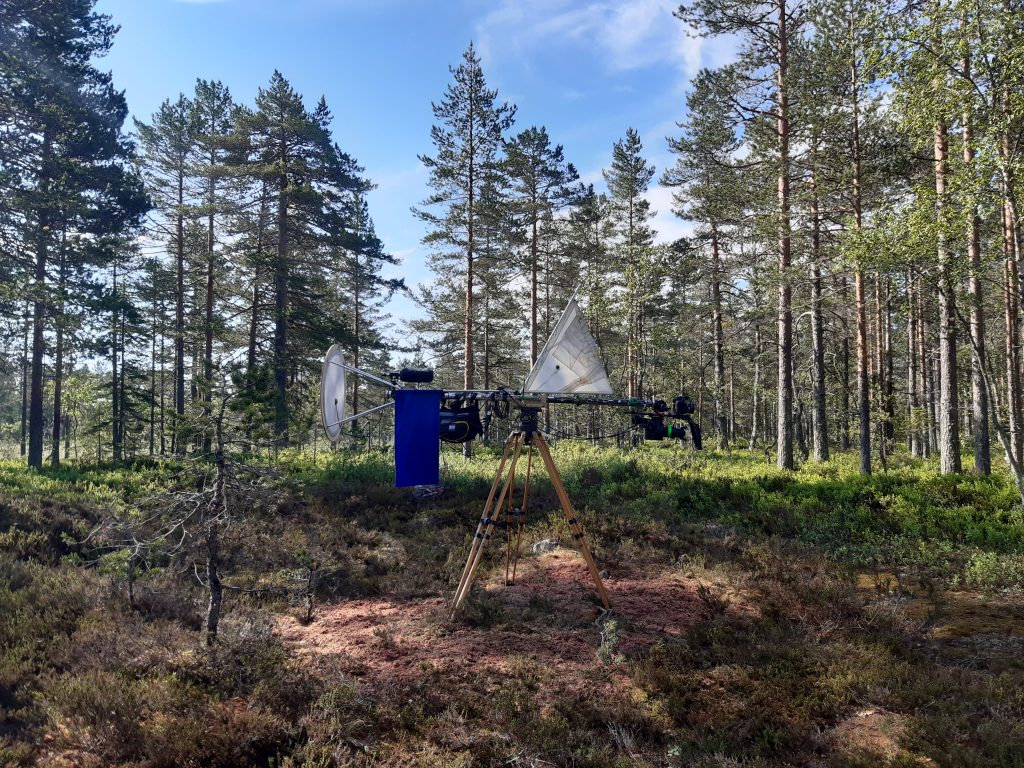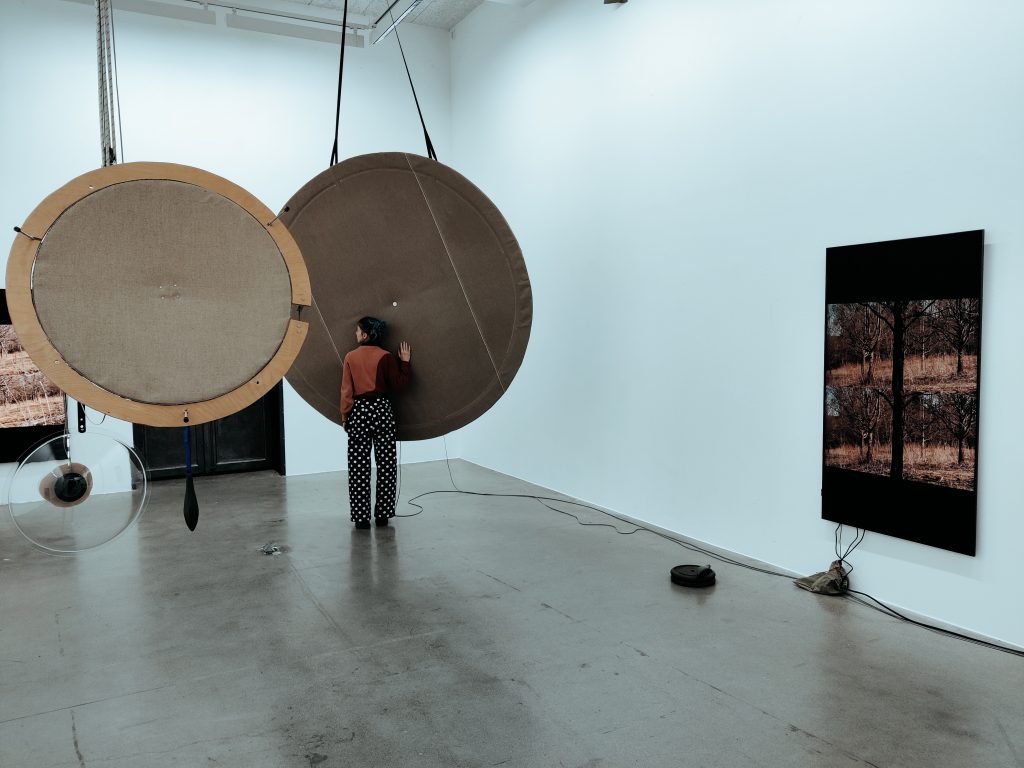
Exhibition by Ellen Røed and Signe Lidén at Trafo Kunsthall
The exhibition KOMPASS shown at Trafo Kunsthall between March 12th and April 24th 2021, results from the artistic research project Image as Site at SKH, where Ellen Røed and Signe Lidén have developed a method for field recording that combines sound and image in a distinct form of attentional (aesth)ethics. In this project, Røed and Lidén explore how instruments, time and movement are included in and affect the relationships between bodies, images and places, between experience and representation, in various forms of camera-based field recordings.
The investigations are now presented at Trafo Kunsthall, where the artists have developed an installation with sound, video and sculptural elements. Sound is mediated in the room through a form of field-rigs, reorganized structures that Røed and Lidén initially developed to record sound and image material in the field. Cameras, sound recorders and microphones that sat on the rigs have been removed, and replaced by textile membranes that mediate sound.
The exhibition is supported by the Swedish Research Council, Stockholm University of the Arts, The Norwegian Art Council, Asker Municipality, Viken County Municipality and Fargerike Asker.
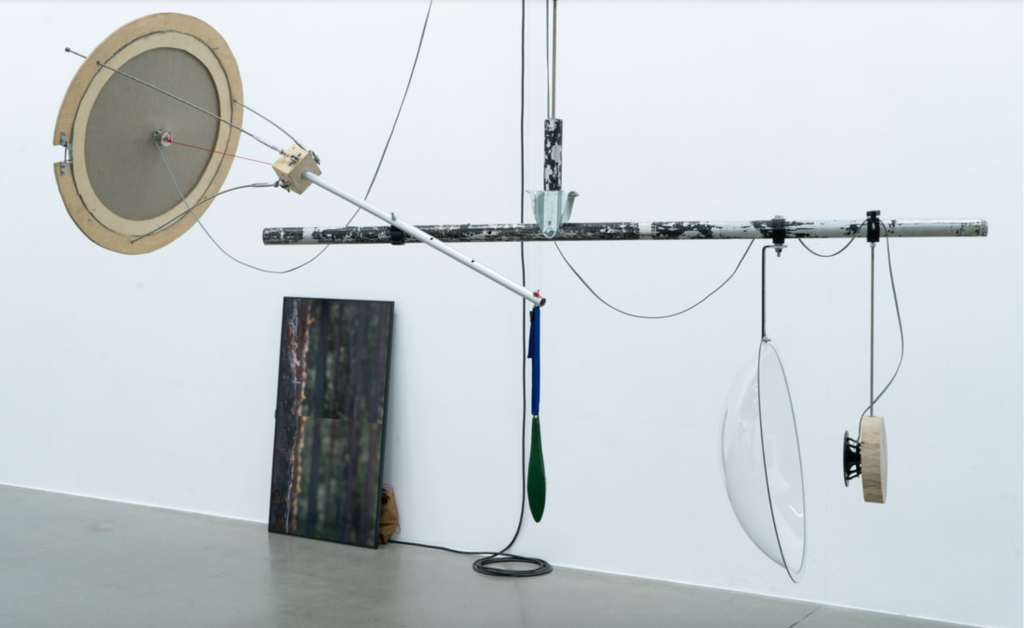
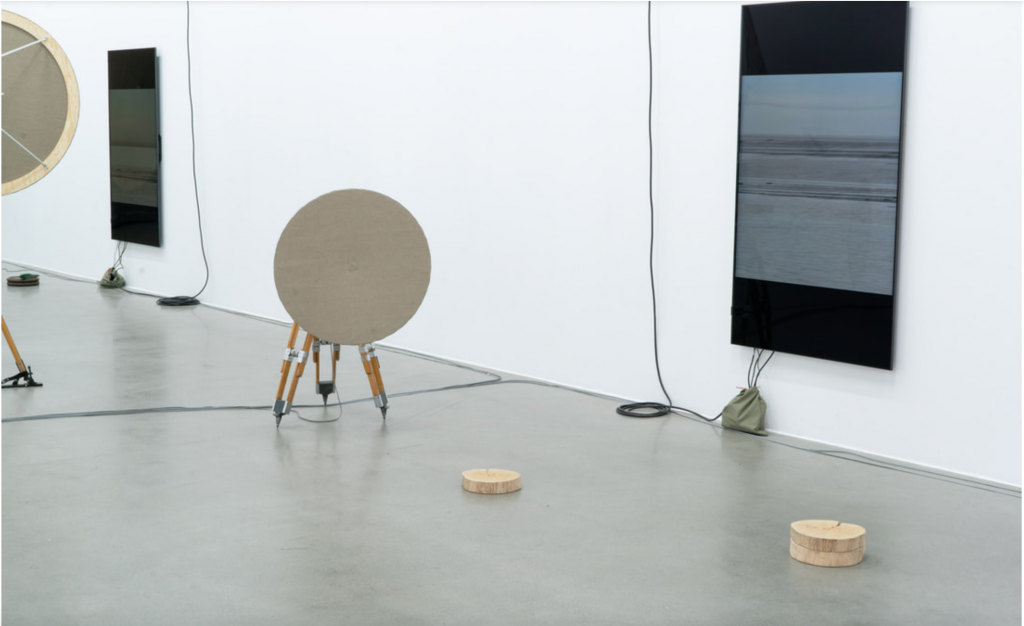
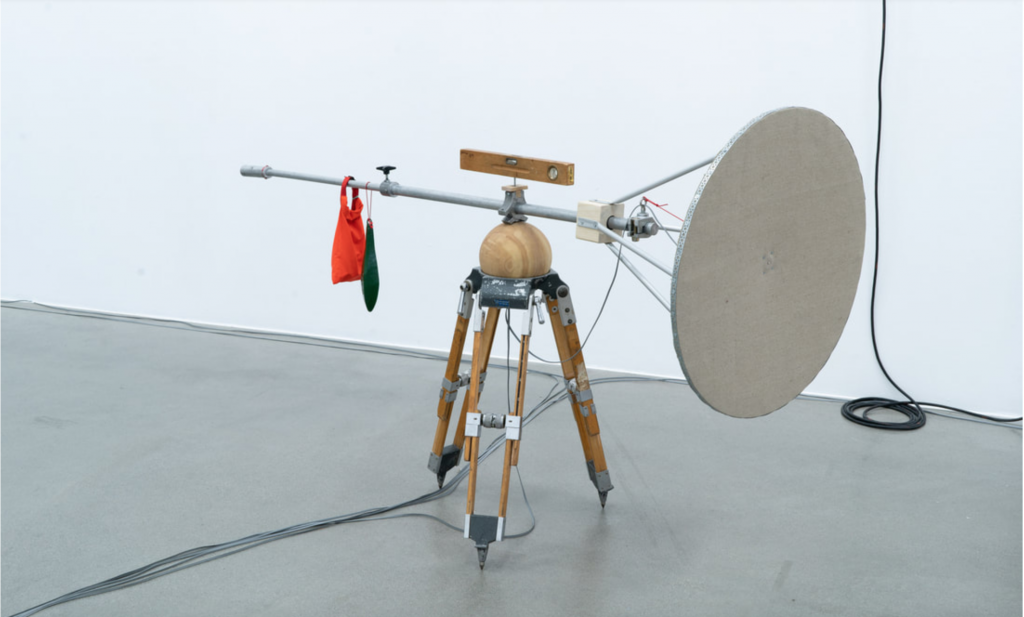
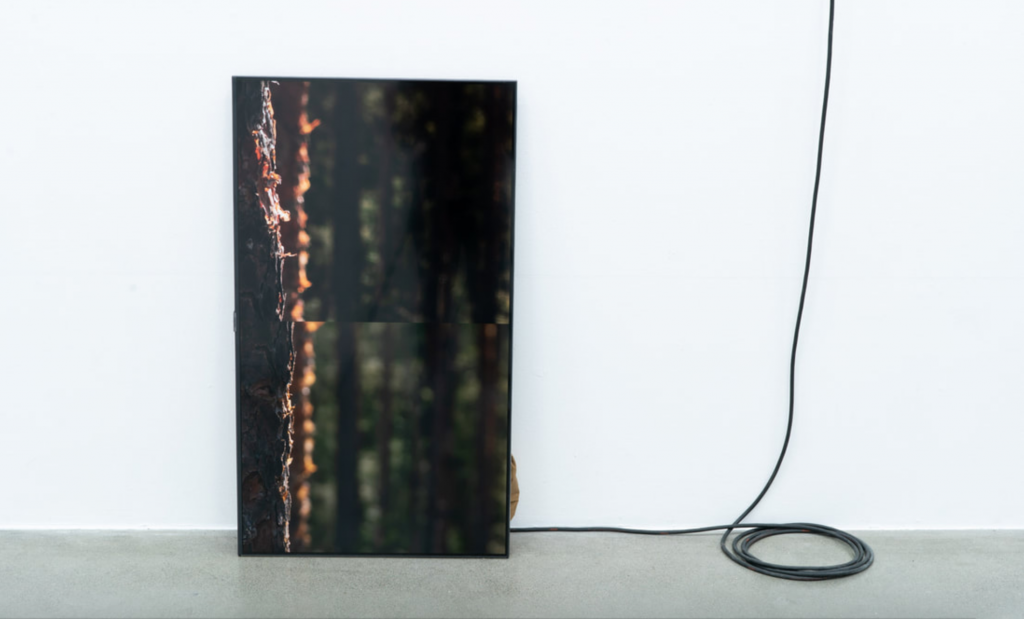
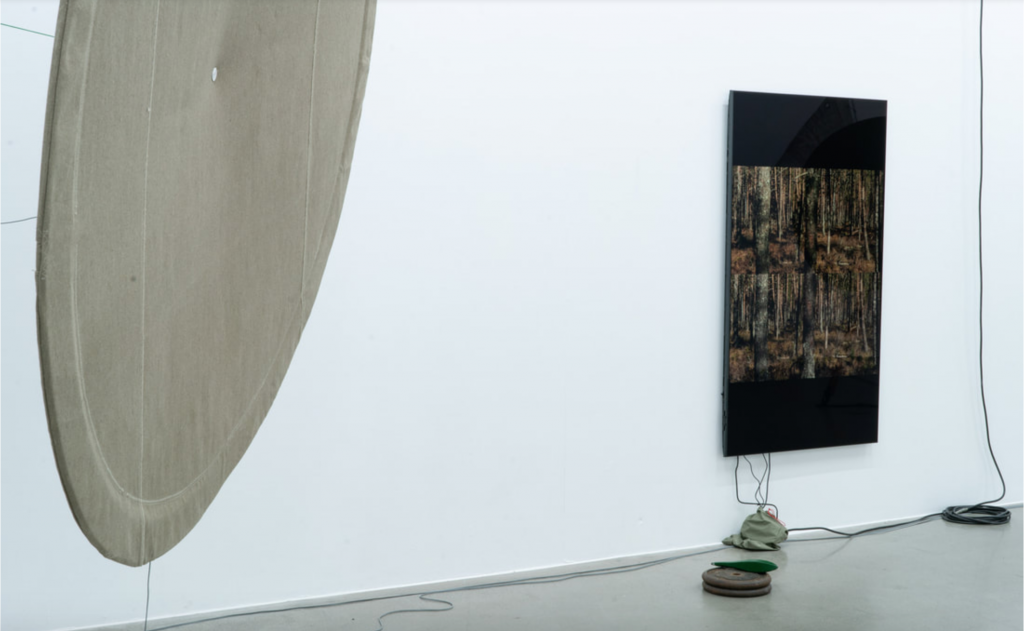
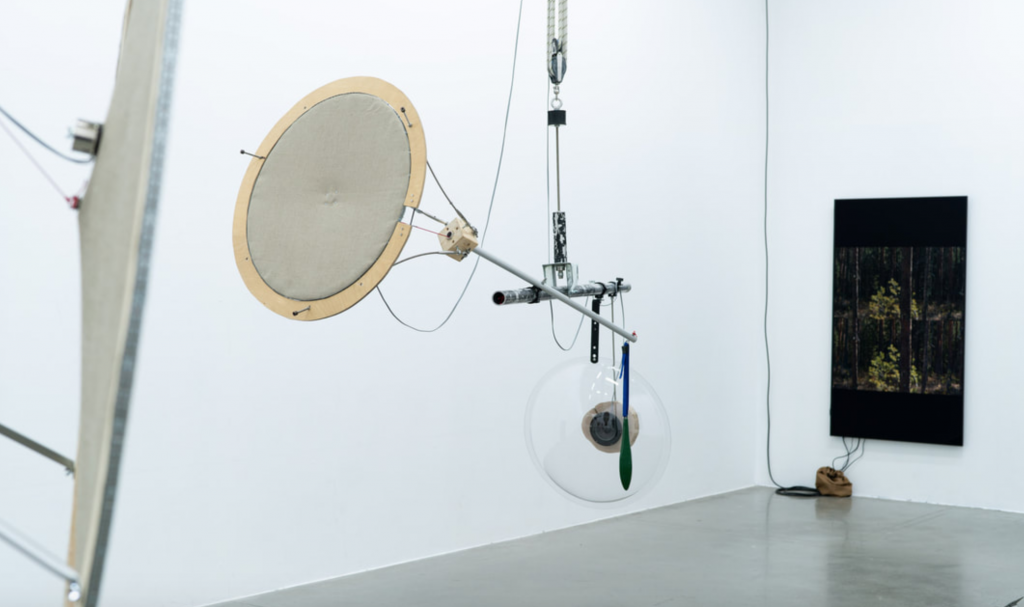
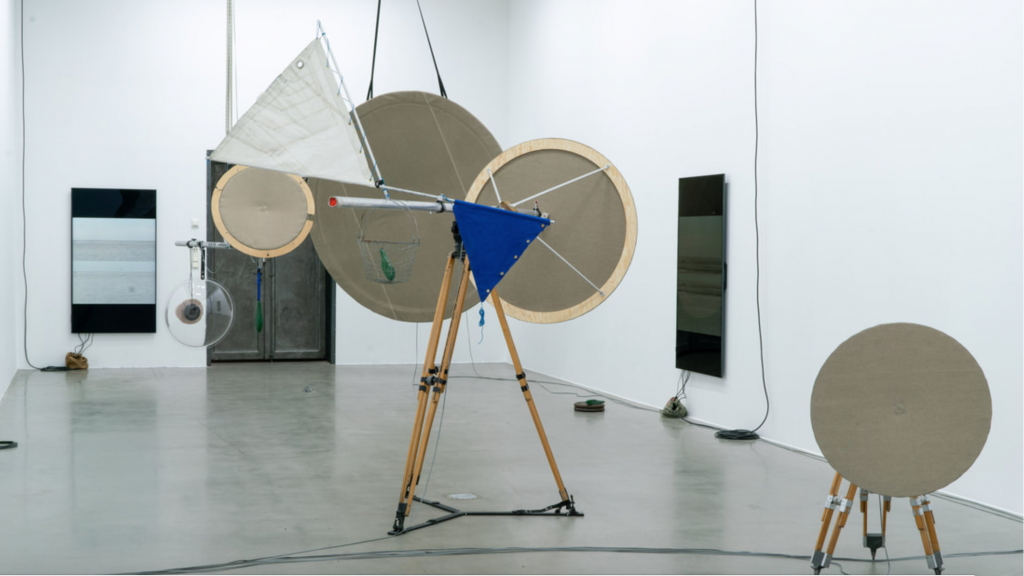
The field recordings for the exhibition KOMPASS were made in various
forests, forest plantations and forest seed archives, as well as on a
small island located in the Wadden Sea, part of a tidal zone that
extends from the Netherlands, along Germany and up along the coast of
Jutland. The rising and falling of the sea on the island means that it
is connected with the mainland only when the tide is at its very lowest.
The tide, as well as the constant and changing wind, have become part
of the method, the language and the attention that underlies the
fieldwork of Røed and Lidén. The local and localized experiences on this
island open up an understanding of being present, in a recording
situation, in different situations that are connected through looking,
hearing, carrying, rigging and balancing. These are mediated through the
recording equipment, the rig, and stored in the recordings.
Through their work with the sound and camera rig, the artists ask
questions about what it means to engage in, perceive, observe, listen,
film, record, be in and relate to the surroundings. Adjustments of focus
are performed by the cameras themselves, in interaction with the light,
the movements of wind and gravity of both the forest and the rig. By
combining equipment from the film industry, such as jib and other
devices for camera movement from film, with a mode of thinking found in
the practice of field recording in sound art, the artists also challenge
existing practices. They highlight an approach to recording that takes
into account the active connections that sound and images enable between
the operators, their bodies and technical devices. These are seen as
part of the environment, and serve to modulate experience through
attention, time, listening, and adjustment.
The structurally monotonous material, with a fixed camera position and
minimal action, evades narrative and reflects an ecological thinking
while emphasizing sensing without presenting explicit ethical arguments.
While analyses of images of nature often reflect a way of thinking that distinguishes between nature and its representation, Røed and Lidén seek to develop an aesthetic in which images are not considered as separate from what is depicted in them, but as immanent, both materially and socially a part of the world. The relationship between artwork, artist and nature is an ethical and ecological question where images are not just visual expressions, they are ongoing, becoming. They are relational, performative, they are both a site and a form of process. They are part of the environment that is not only around us, but that passes through us. The artists thus leave both the aesthetics of the avant-garde, where the materiality of the medium is in a separate position disconnected from the relations of the world, and the phenomenological attitude where the artist registers impressions. Lidén and Røed’s images emerge in a network of interactions rather than as a result of planned actions controlled by intention.
